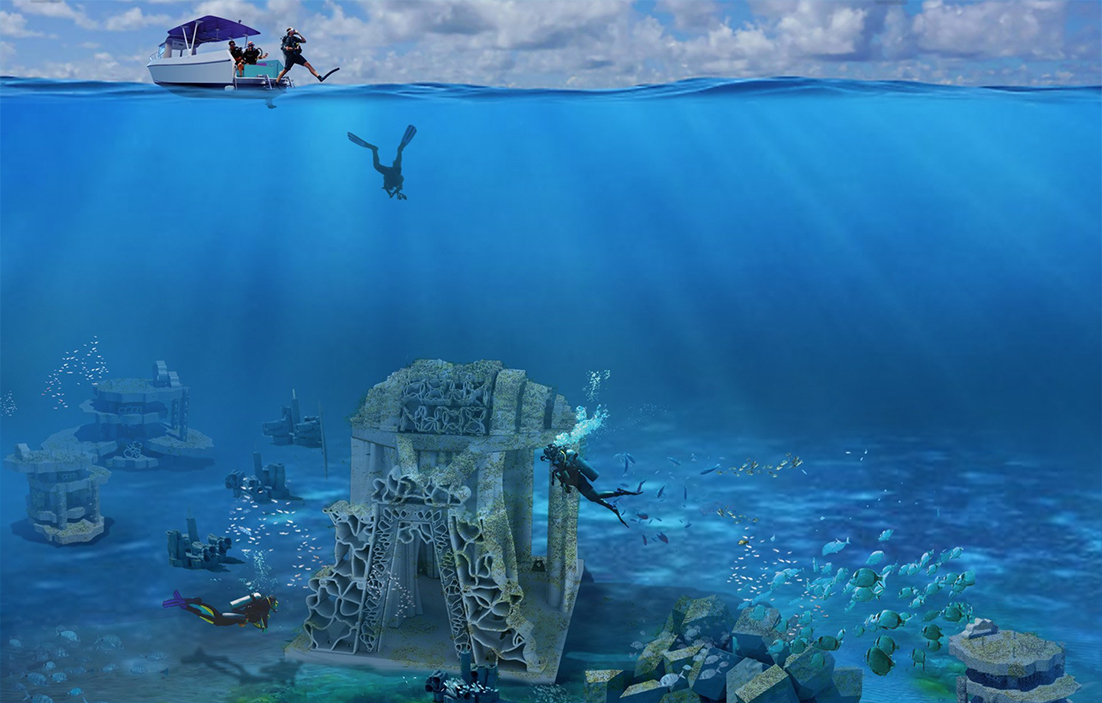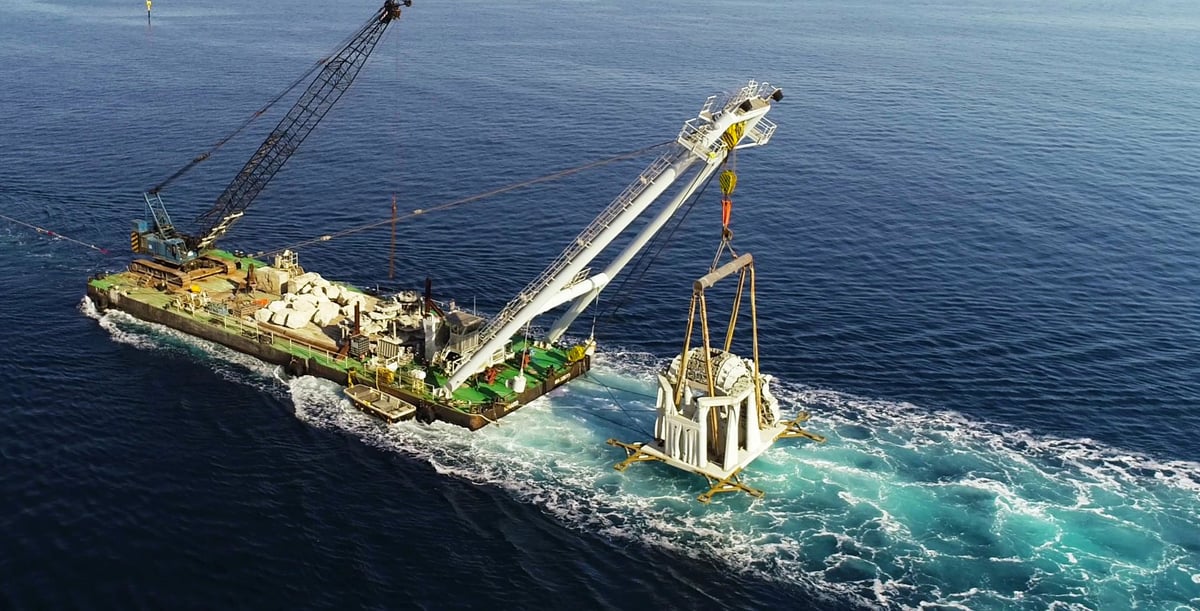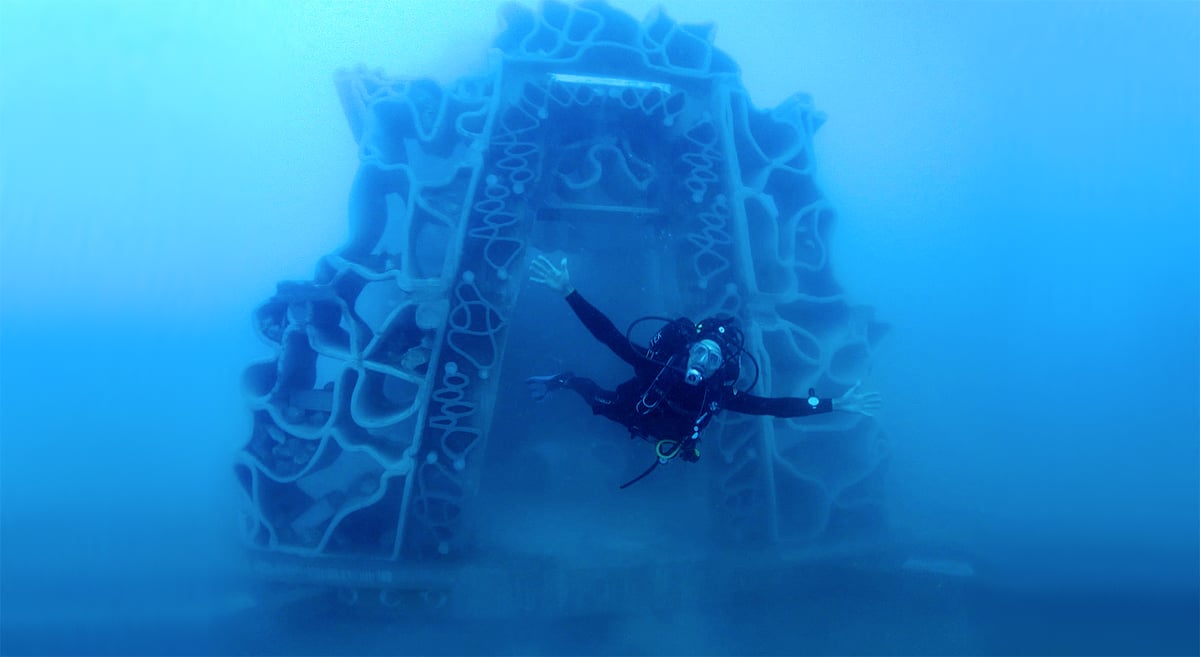Years in the making, the final pieces of an impressive 3D printed artificial reef were installed this week near a protected marine area in the Mediterranean off the coast of France. Intended as destination for scuba divers, the Mega Reef artificial reef project features small tower modules, clusters, and hangings on a 50-meter linear site, which makes it the biggest European artificial reef 3D printed in concrete.

Scuba tourism is big business globally and growing, but pollution, over fishing, and global warming has decimated the marine life that divers go to see in many parts of the Mediterranean. In response, once-popular destinations attempt to attract underwater visitors by intentionally sinking plans, boats, and other potentially polluting structures to provide divers with unique experiences. Other locations that haven’t yet lost their marine life are trying to mange growing crowds of divers, which are having a negative impact on the health of their reefs.
The objective of the Mega Reef project, supported by the city of Agde’s Marine Protected Area and a host of regional and international development programs, is to create an artificial diving site that will both promote marine biodiversity and allow dive activity to be relocated from the delicate marine reserve of the nearby Rock of Bresco. It thus participates in protecting local marine life and maintaining sustainable ecotourism.

3D Designs Divers & Fish Prefer

Developing just the right design and materials for a reef that will support, protect, and encourage the growth of marine life, while also attracting divers, was no easy task. Technological and ecological engineering work piloted by CyBe Construction, in collaboration Seaboost Ecological Engineering and biologists, resulted in designs featuring cavity sizes, shapes, and textures that will maximize the reproduction and population of the target underwater species.
For divers, the coral-looking structures mimic the natural environment in a way that’s not possible with cinder block and traditional construction materials.
3D concrete printing offers prospects for future ecological restoration projects from Mediterranean waters to the Great Barrier Reef in Australia. Designed in collaboration with 3D printing allows this very complex geometry to be produced at a low cost. In nature, this deep rocky ecosystem – a shelter to thousands of species of fish, crustaceans, corals, algae, and mollusks, can take several hundred years to form.
Dozens of other 3D printed reef projects are underway around the globe in an effort to save marine life threatened by depleting natural coral.
The European research project Artificial Reef 3D Printing for Atlantic Area (3DPARE) creates optimized artificial reefs shaped through large-scale 3D printing and made of bio-receptive materials from natural and renewable sources to simulate the colonization. The program has created several different types of reef structures targeting various marine species. Although the data is not final, the program aims to show that compared to other artificial reefs made of conventional construction materials, the 3DPARE solutions are more ecological and tailored for enhancing the area’s biodiversity and marine environment.
Lead image source: Seaboost Ecological Engineering Aire Marine Protégée de la Côte Agathoise Agde
License: The text of "France Set to Open Europe’s Largest 3D Printed Artificial Marine Reef" by All3DP Pro is licensed under a Creative Commons Attribution 4.0 International License.

